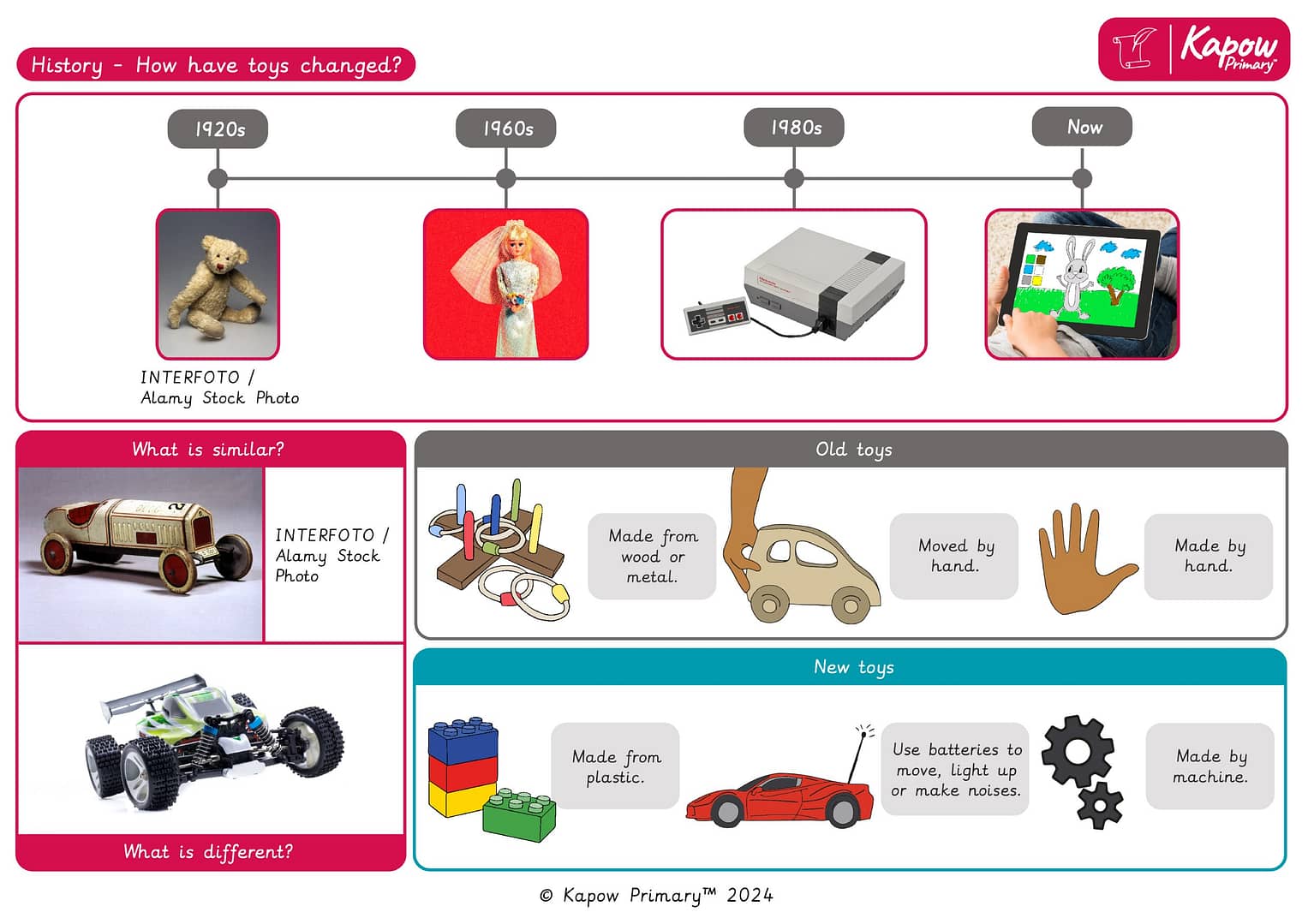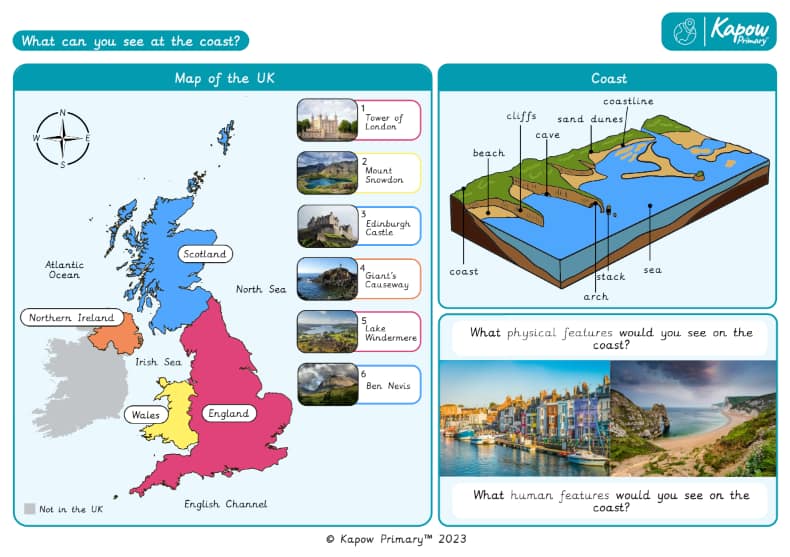
A Knowledge organiser that captures the essential knowledge and skills learnt throughout the unit Geography, Year 1/2, Cycle A, What Can You See at the Coast?
This Geography resource is designed to support the pupils as they explore coastal environments and their key physical and human features. It introduces key vocabulary such as beach, cliff, harbour, tide, and erosion, helping the pupils understand how coastal landscapes are formed and how they change over time. The pupils will also learn about different coastal habitats, wildlife, and the impact of human activity on the coast.
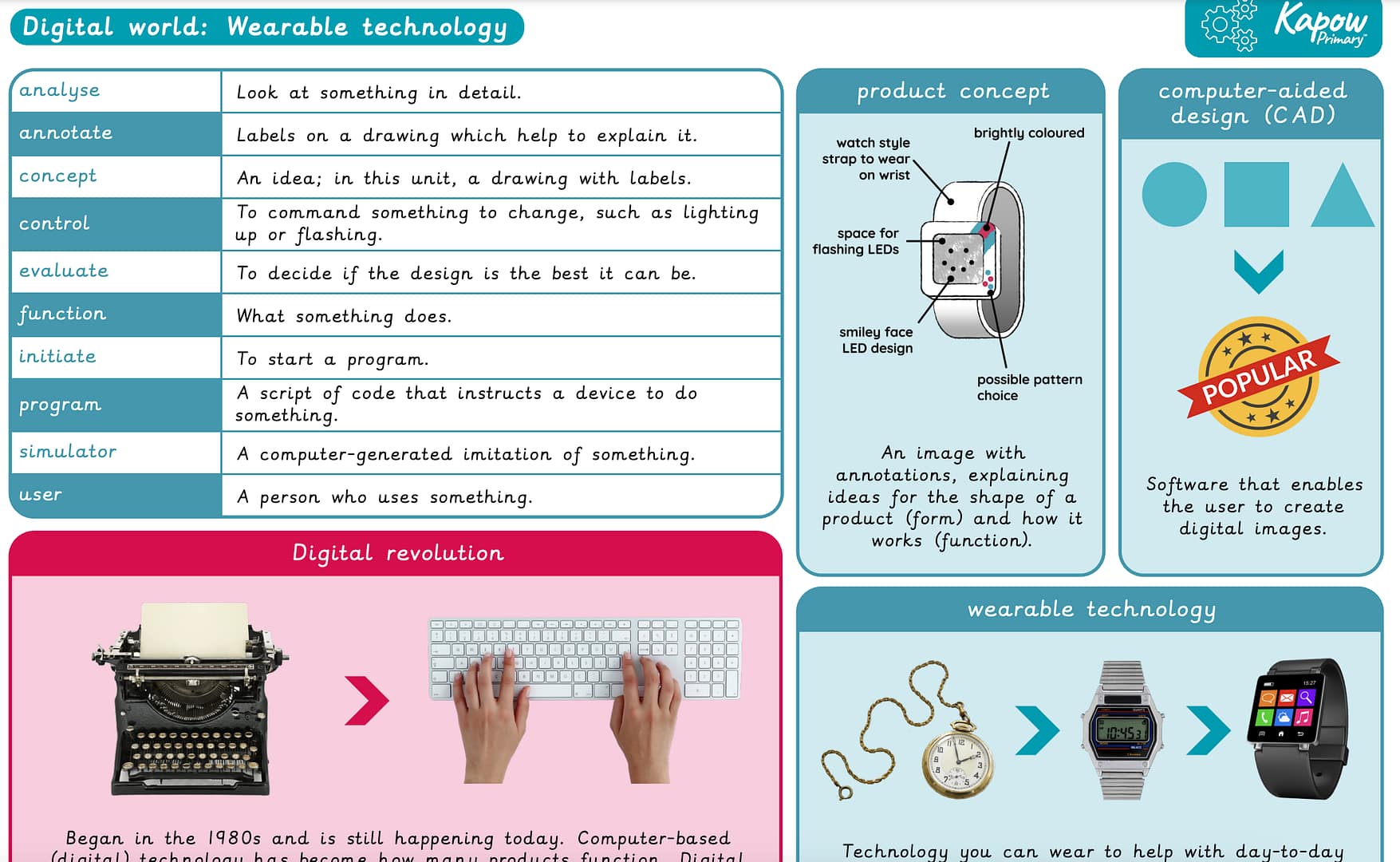
A Knowledge organiser that captures the essential knowledge and skills learnt throughout the unit Design and Technology (D&T), Year 3, Wearable Technology.
This Design and Technology resource is designed to support the pupils as they explore the concept of wearable technology and its applications. It introduces key vocabulary such as circuit, sensor, input, output, and prototype, helping the pupils understand how technology is integrated into clothing and accessories to enhance functionality. The pupils will also learn about the design process, including planning, testing, and evaluating their own wearable technology ideas.
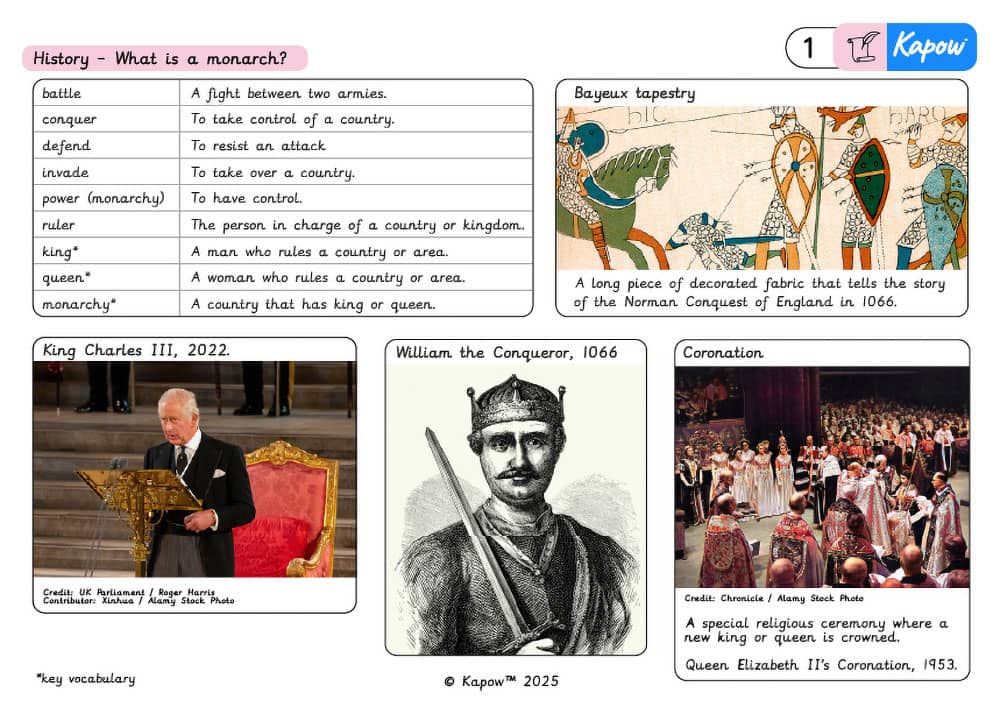
A Knowledge organiser that captures the essential knowledge and skills learnt throughout the Year 2 unit History, Y2, What is a monarch?
This History resource is designed to support children as they explore monarchy now and in the past. It highlights key vocabulary, features significant monarchs and includes images to show how castles changed over time. It is perfect for consolidating essential knowledge.
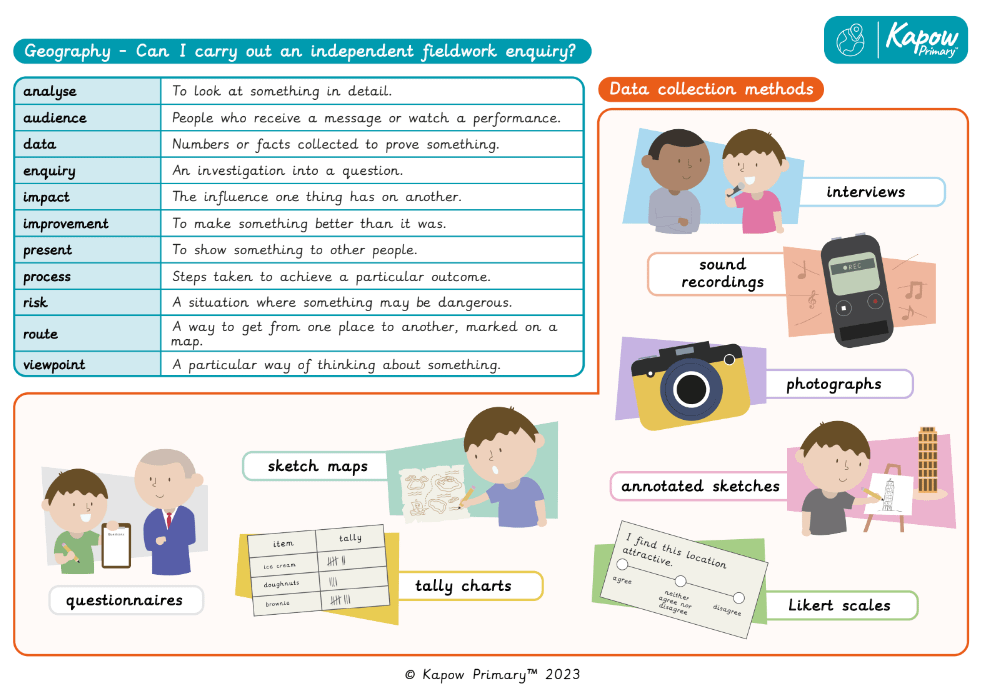
A Knowledge Organiser that captures the essential knowledge and skills learnt throughout the unit Geography, Year 6, Can I carry out an independent fieldwork enquiry?
This resource is designed to support pupils in conducting geographical fieldwork by exploring land use in their local area. It introduces key vocabulary such as land use, zoning, public amenities, and data presentation, alongside real-world applications of mapping and observation. Pupils are guided through the process of enquiry—from asking questions and collecting data to analysing and presenting findings using tools like bar graphs and annotated maps. With clearly illustrated examples and a focus on geographical enquiry skills, this unit strengthens pupils’ ability to investigate and interpret spatial patterns in their everyday environment.
A Knowledge Organiser that captures the essential knowledge and skills learnt throughout the unit Archived – History, Year 4, How did the Maya civilisation compare to the Anglo-Saxons?
This resource is designed to support pupils as they explore how the Maya civilisation developed and how it contrasted with Anglo-Saxon life. It introduces the challenges the Maya faced in settling the rainforest and the innovative solutions they used—such as slash-and-burn farming and crop adaptation. Pupils learn about Maya architecture, including the structure of houses and cities like Tikal, and how these were uncovered through archaeological discoveries. A clear timeline places the Maya periods alongside the Anglo-Saxon era, while key terms such as city-state, hieroglyphics, and creation story support historical literacy. This unit provides rich opportunities for comparative thinking and cultural understanding.
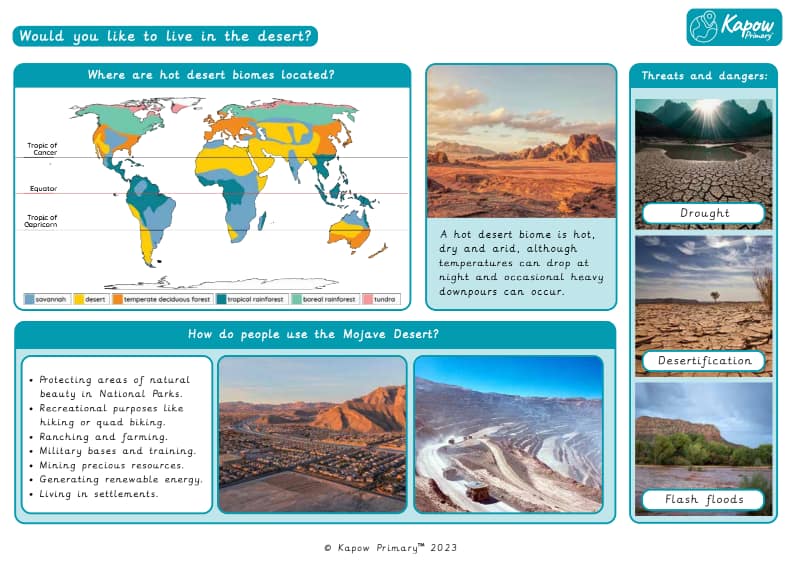
A Knowledge Organiser that captures the essential knowledge and skills learnt throughout the unit Geography, Year 5, Would you like to live in the desert?
This resource is designed to support pupils as they explore the characteristics of hot desert biomes, with a focus on the Mojave Desert. It introduces key geographical vocabulary such as arid, biome, ranching, and renewable energy, and explains how deserts can be both harsh and habitable. Pupils learn about the location of hot deserts globally, threats such as drought and desertification, and how human activities—from mining to recreation—shape desert environments. Illustrated with physical features like sand dunes, mesas, and natural arches, this unit encourages pupils to consider both the challenges and opportunities of desert living.
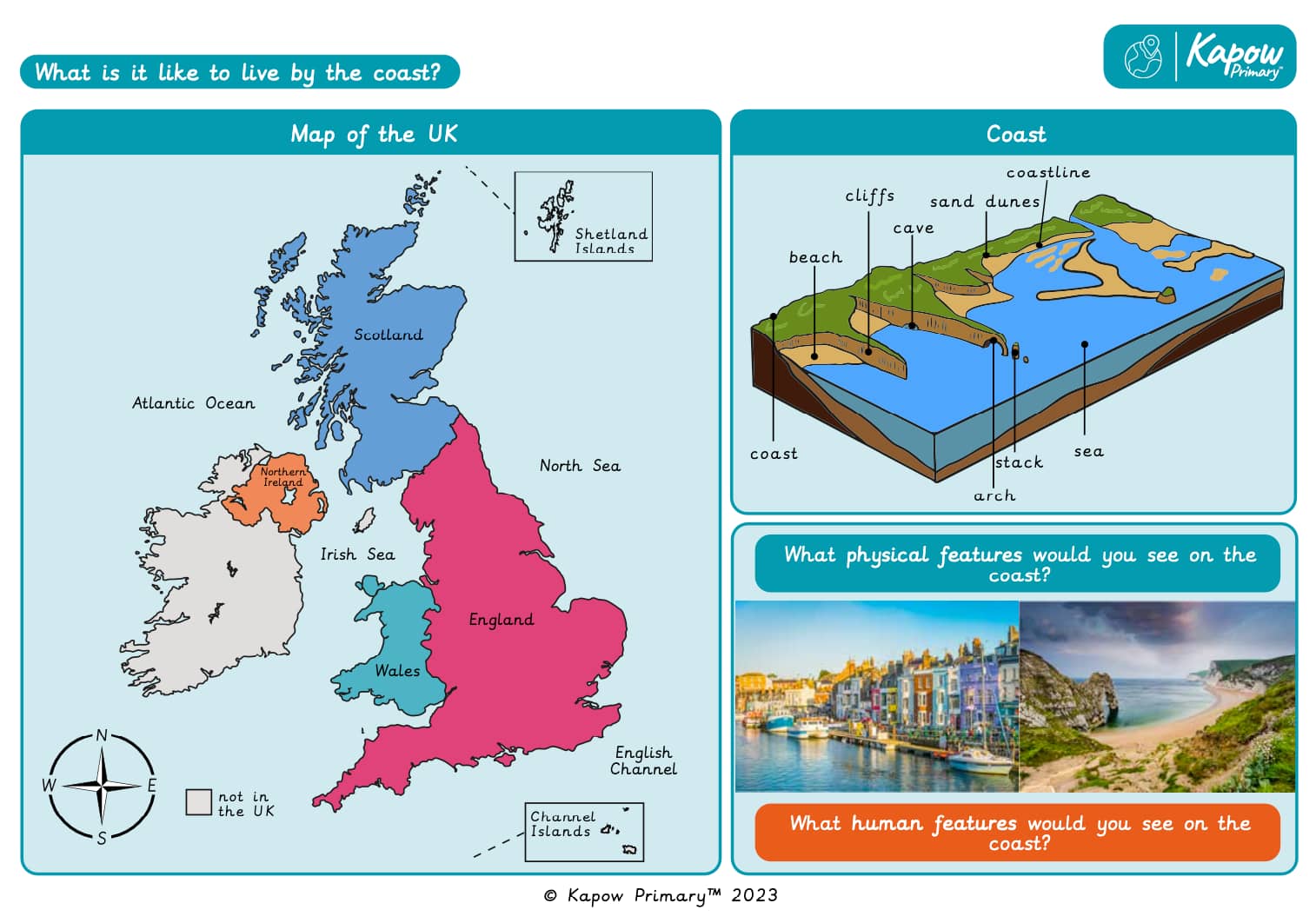
A Knowledge Organiser that captures the essential knowledge and skills learnt throughout the unit Geography, Year 1, What is it like to live by the coast?
This resource is designed to support pupils as they investigate what makes coastal areas distinctive. It introduces key geographical terms such as beach, cliffs, cave, arch, stack, sand dunes, and coastline, supported by an engaging cross-sectional diagram of coastal landforms. A map of the UK helps pupils locate coastal regions, while photos prompt them to compare physical and human features, including natural formations and seaside towns. This unit is ideal for developing early geographical vocabulary and encouraging observation of contrasting environments.
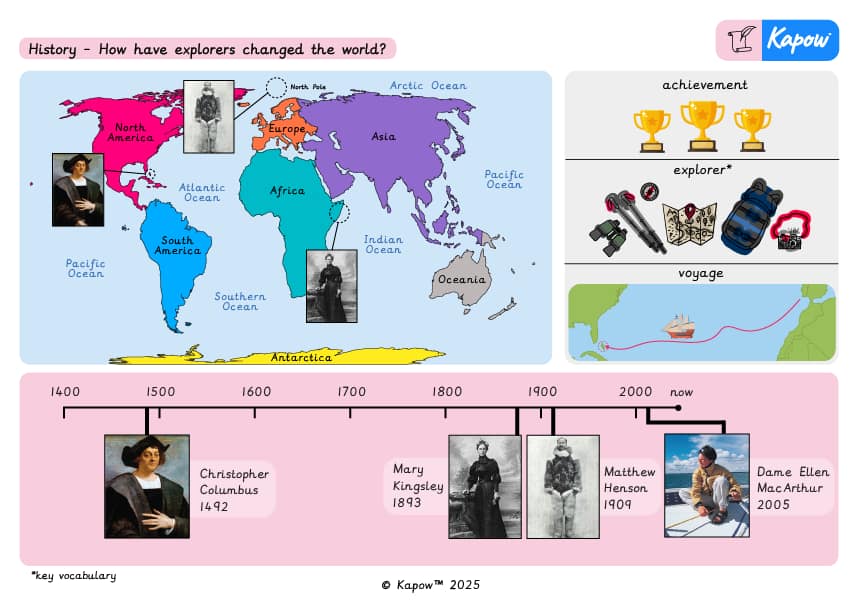
A Knowledge organiser that captures the essential knowledge and skills learnt throughout the Year 1 unit History, Y1, How have explorers changed the world?
This History resource is designed to support children as they discover explorers from the past and present. It contains a timeline showing key dates for significant explorers, a map of the world showing where explorers travelled and illustrates the unit’s key vocabulary.







